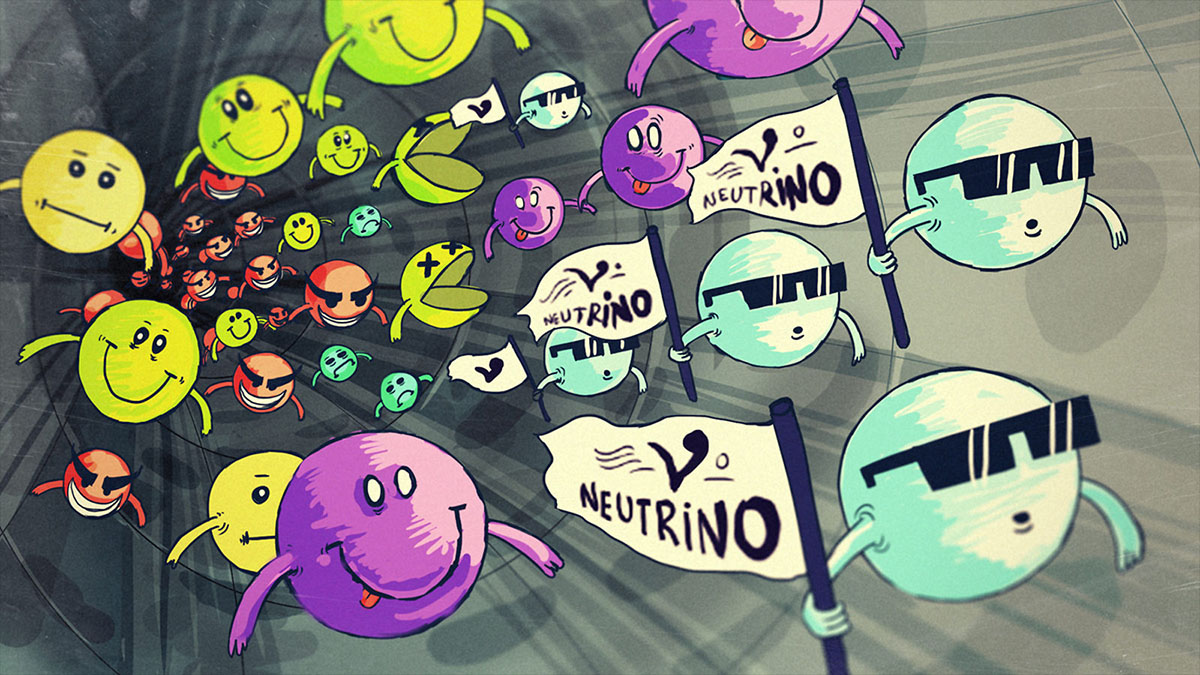are neutrino beams the wi-fi of the future?

Say you need to communicate not just with someone or something far away, but someone or something very, very deep underground, or underwater, or on the other side of a planet. You could create satellite relays which will bounce the signal around to get to your target wherever it is in space, but that requires a lot of money and some very delicate arranging and aligning so the satellites can see each other. And when you need to send a message through water or rock, no satellite will help you there. The signal will just dissipate to nothing before reaching the receiver or slow down to the point where you’d have to transmit a simple message for hours just to make sure the other party can piece it together. What to do, what to do? How about just sending out a beam of neutrinos which will easily travel through solid objects and help ensure high fidelity where other signals will not reach or become totally impractical to use? A team of physicists at FermiLab just so happened to test how well this idea would work and managed to transmit a brief binary message through almost 780 feet of rock at an impressive 99% accuracy rate. Neat, huh? Definitely. But there are some major tradeoffs involved…
First off, if you want to download a movie or watch Netflix underground with your new neutrino wi-fi, you will be sorely disappointed since their more or less average transfer rate was 0.1 bits per second, peaking at a very much not blistering 2.2 bits per second. It’s not that the beam can’t carry more data, it’s that neutrinos interact so rarely with normal matter that this is what could be detected from the 2.5 × 10¹⁴ particles sent. Speaking of detecting the messages sent with neutrino beams, if you want to use a neutrino wi-fi, you’d need a very big, very precisely calibrated modem that weighs around 170 tons, which would make it rather difficult to stuff in a backpack or launch into space for practical use. Finally, you need a very, very powerful beam to send all these neutrinos and aim it directly at your target, much the same way laser communication would work. Certainly, it should be possible to broadcast waves of neutrinos across a wide area in pulses, each pulse representing a binary symbol, but as the neutrinos disperse, they would become a lot harder to detect and that average data rate cited above would plummet by at least an order of magnitude if not two. And if you’re already using a very powerful neutrino beam with which it would still take almost five and a half days to download the illustration I used for this post, it’s very hard to imagine that a wide area broadcast would perform comparably.
But all that said, this is just a proof of concept and the whole point was to show that neutrino beams really can transmit data in a scenario where they’re needed to do just that. We shouldn’t expect this test to reach any real or useful data rate. However, it’s difficult to overlook the problems with detecting these neutrinos because any sort of reliable detection would not only involve a massive detector but hiding it somewhere only neutrinos will pass without any difficulty. Suddenly a satellite array looks like a much more practical solution since satellites be able to provide much faster data exchange, won’t have to accommodate enormous internal structures, and be buried underground or sink deep underwater to do their work. Unless we can come up with lightweight but accurate neutrino detectors, this proof of concept is very likely to remain just that, and given the difficulty in the amount of effort necessary to detect something that only rarely and very weakly interacts with matter, it’s not an easy task to put it mildly. At least we know it can actually be done and have a very good use for new detectors right away, thinking out of the box to harness exotic particles for our data needs. Even if we can get something close to a slow dial-up connection going, that would already be more than enough to use in emergencies and scenarios in which we need to talk with the outside world in very challenging and distant environments and a few brief words sent every once in a while would definitely make a real difference.
See: Stancil D., et al. (2012). Demonstration of communication using neutrinos Phys Let A arXiv: 1203.2847v1





